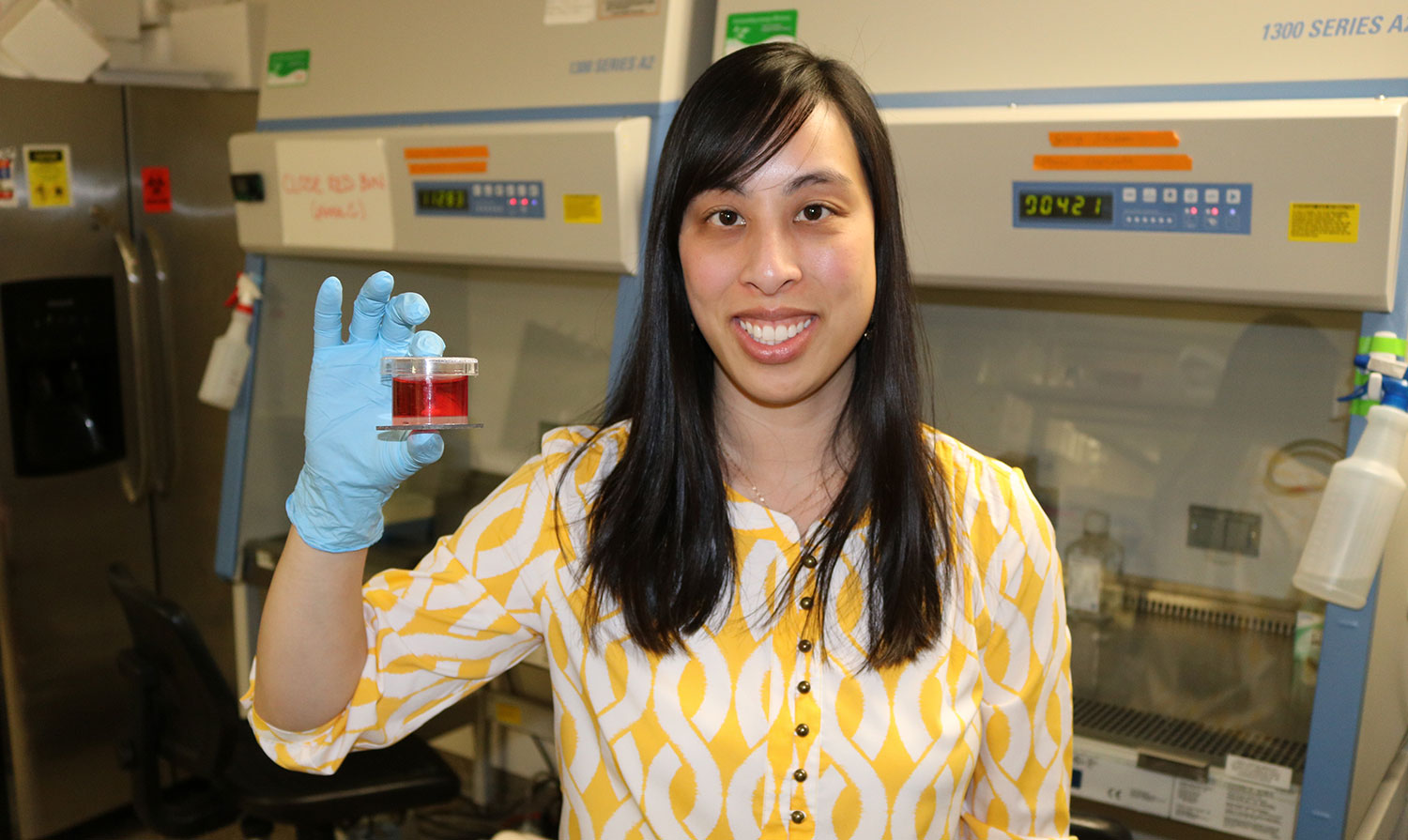Wayne State research team using collagen to strengthen engineered blood vessels
 Collagen is a common ingredient in products ranging from cosmetics and body lotion to vitamin supplements. It is also the most abundant protein in our bodies, found in our muscles, bones, skin, blood vessels, digestive system and tendons.
Collagen is a common ingredient in products ranging from cosmetics and body lotion to vitamin supplements. It is also the most abundant protein in our bodies, found in our muscles, bones, skin, blood vessels, digestive system and tendons.
Recently, collagen use has gained momentum in biomaterials and regenerative medicine applications. Its strength, elasticity, wide availability and biocompatibility make collagen advantageous for such purposes. A research team led by Mai Lam, assistant professor of biomedical engineering at Wayne State University, and Ph.D. student Bijal Patel is using a collagen-based hydrogel to reinforce tissue-engineered blood vessels seeded with human fibroblast cells.
"Tissue engineering blood vessels is an important endeavor for clinical care due to the limited availability of autologous replacement vessels," said Lam.
The tunicae of blood vessels are three layers: an inner (intima), middle (media), and outer (adventitia) layer. Lam's team specifically looked at the tunica adventitia because of its crucial role as structural support to prevent rupture under high pressure.
"In surgery, during endarterectomies, surgeons can strip the vessel of all the intima and most of the media, leaving the adventitia as the main strength layer to hold suture and close the vessel," according to the team's research paper, which was published in Scientific Reports in February 2018. "It is well known that the collagen content in the vessel wall is the main strength of the blood vessels."
Other vascular grafts using fibroblast cells have required a significant maturation period to reach full strength. Lam's team modified its novel "ring stacking method" - assembling rings of vascular tissue around a center post to create a tubular structure - to formulate fibroblast stacks, and supplemented the rings with collagen gel while using other factors such as ascorbic acid to stimulate additional collagen production.
While the group found an optimal combination for tensile strength and fiber maturity - in less time than most prior research - with the stability and functionality afforded by the ring stacking, subsequent studies will focus on methods to achieve a level of strength closer to that of native adventitia as well as an improved immune response.
"For the millions of patients undergoing bypass surgery annually, limited availability of patient vessels for self-donation is the greatest issue," said Lam. "With further development, engineered vessels such as these could fill this need and be used as viable grafts."